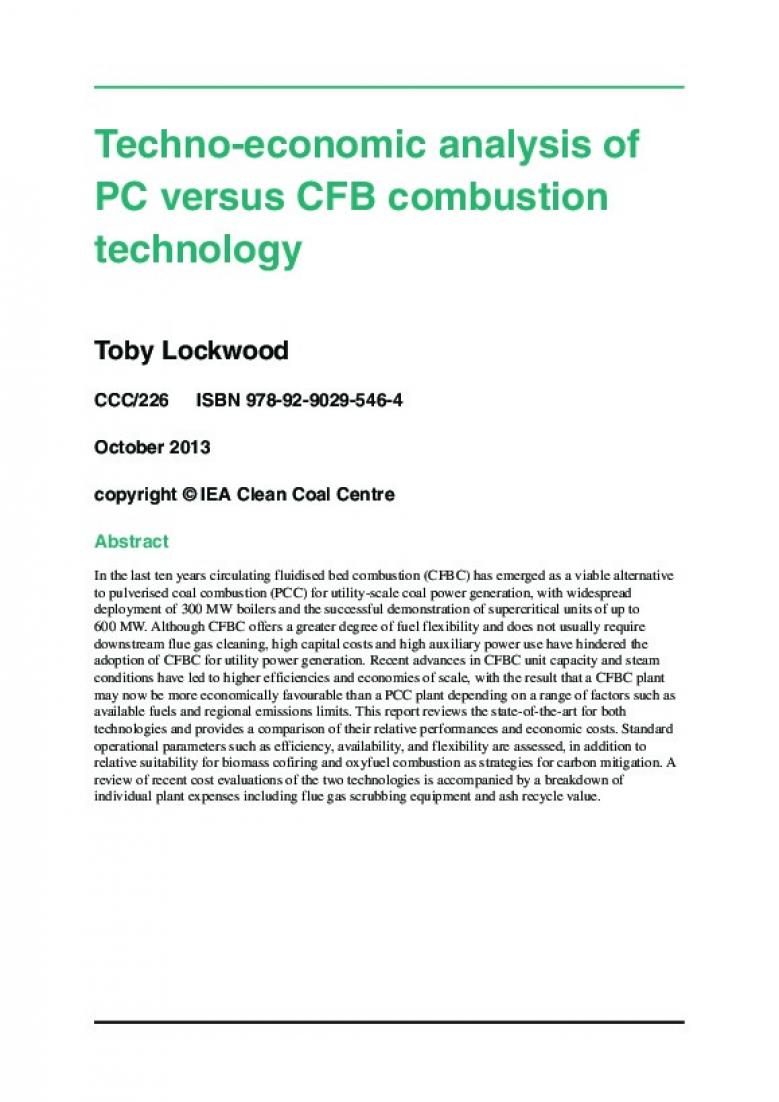CCC/226 ISBN 978-92-9029-546-4
October 2013
copyright © IEA Clean Coal Centre
Abstract
In the last ten years circulating fluidised bed combustion (CFBC) has emerged as a viable alternative
to pulverised coal combustion (PCC) for utility-scale coal power generation, with widespread
deployment of 300 MW boilers and the successful demonstration of supercritical units of up to
600 MW. Although CFBC offers a greater degree of fuel flexibility and does not usually require
downstream flue gas cleaning, high capital costs and high auxiliary power use have hindered the
adoption of CFBC for utility power generation. Recent advances in CFBC unit capacity and steam
conditions have led to higher efficiencies and economies of scale, with the result that a CFBC plant
may now be more economically favourable than a PCC plant depending on a range of factors such as
available fuels and regional emissions limits. This report reviews the state-of-the-art for both
technologies and provides a comparison of their relative performances and economic costs. Standard
operational parameters such as efficiency, availability, and flexibility are assessed, in addition to
relative suitability for biomass cofiring and oxyfuel combustion as strategies for carbon mitigation. A
review of recent cost evaluations of the two technologies is accompanied by a breakdown of
individual plant expenses including flue gas scrubbing equipment and ash recycle value.
| Attachment | Size |
|---|---|
| 1.38 MB |


